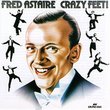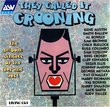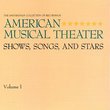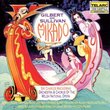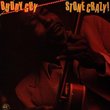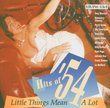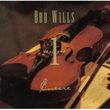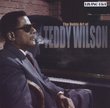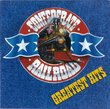| All Artists: Red Nichols Title: Rhythm of the Day Members Wishing: 0 Total Copies: 0 Label: Asv Living Era Release Date: 4/20/1994 Genres: Jazz, Pop Styles: Traditional Jazz & Ragtime, Dixieland Number of Discs: 1 SwapaCD Credits: 1 UPC: 743625502527 |
Search - Red Nichols :: Rhythm of the Day
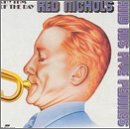 | Red Nichols Rhythm of the Day Genres: Jazz, Pop
In the late 1920s, cornetist Red Nichols's music was a cooler alternative to the "hot" style of New Orleans musicians. A smooth blend of jazz and the popular dance music of the times, his music, and that of Bix Beiderbecke... more » |
Larger Image |
CD DetailsSynopsis
Amazon.com In the late 1920s, cornetist Red Nichols's music was a cooler alternative to the "hot" style of New Orleans musicians. A smooth blend of jazz and the popular dance music of the times, his music, and that of Bix Beiderbecke and Miff Mole, was in many ways a precursor of swing. In fact, several musicians who a few years later would be major figures of the swing era--Benny Goodman, Jimmy Dorsey, and Glenn Miller--turn up on this compilation of Nichols's work from 1925 to 1932, which also includes three tracks by Mole's Molers. The tightly arranged music effectively uses sharp contrasts in sounds, often with novel instrumentation. Baritone saxophone, tympani, and flute frequently turn up in these generally cheerful, very well executed tunes, while the frequent solo guitar breaks by Eddie Lang are especially distinguished. --Stuart Broomer Similar CDsSimilarly Requested CDs
|
CD ReviewsA good introduction to an overlooked talent Neil Ford | Sydney, Australia | 12/19/2002 (3 out of 5 stars) "ASV Living Era have put together another good compilation. This one contains some of the high-lights of Nichols's 1920s recordings. The transfer sounds clean (better that the "His best recordings" CD), although an artificial stereo effect has been used, which can be circumvented by listening in mono.The Five Pennies were noted for playing what was called "chamber jazz", jazz that could be listened to as well as danced to. The arrangements are creative and thoughtful, but at the same time they swing and are distinguished by great ensemble playing.The liner notes are useful, pointing out that Nichols recorded with many band line-ups (including a number of later-to-be-famous names: Glenn Miller, Gene Krupa, the Dorsey brothers, Benny Goodman, etc.), under a variety of band names, and that Nichols and Bix Beiderbecke, who started playing around the same time, were influences upon each other. A valuable introduction to an often-overlooked talent of the jazz age.Even better than this is the Charleston Chasers CD (ASIN B00000K55D), this being one of the band names Nichols used. (Don't get them confused with the modern British band of the same name.)"
|

 Track Listings (20) - Disc #1
Track Listings (20) - Disc #1